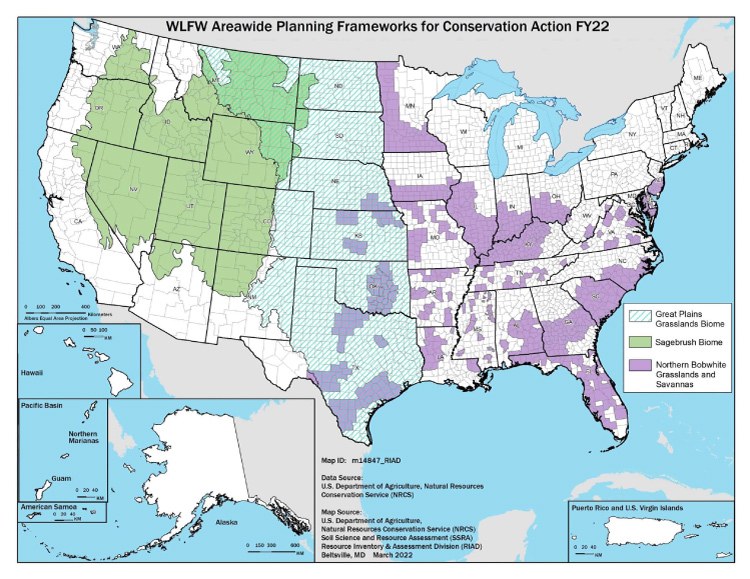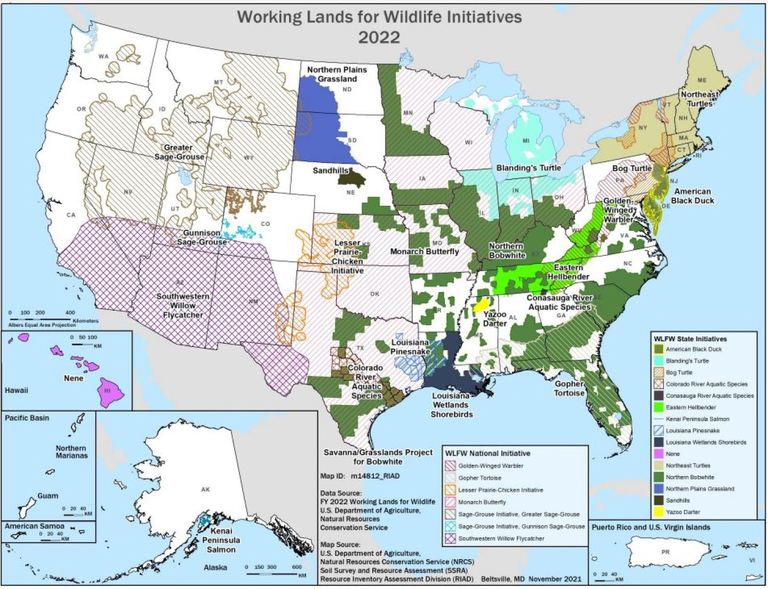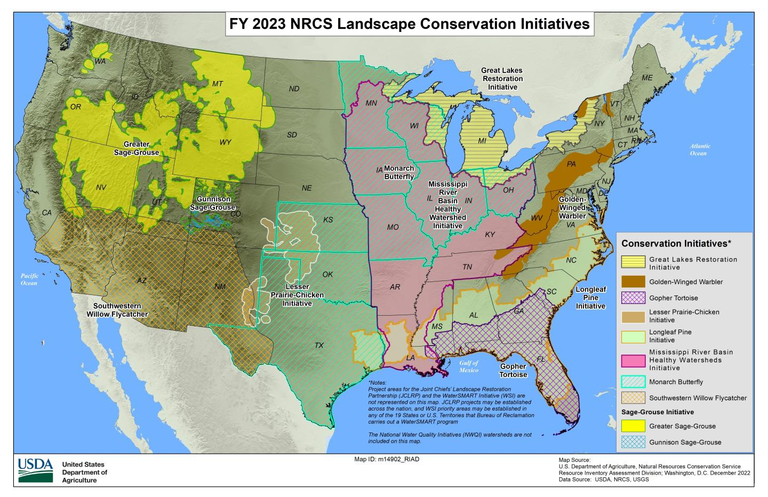Where We Work
In 2021-2022, a multi-state, areawide planning team produced the first biome-scale frameworks for conservation action in the Great Plains grasslands, western sagebrush country, and for the central and eastern grasslands and savannas within 25 states in the northern bobwhite range. These frameworks for conservation action capture the science documenting the threats to biomes, or ecological landscapes, and the wildlife that are part of them, the conservation actions that NRCS can supports to address these threats and benefit producers, and the NRCS goals for implementing these actions over time.
WLFW is currently active in 48 states. Eight national and 14 state-identified initiatives are used to focus individual projects that meet both the needs of the species as well as those of the agricultural operations. Individual species are used as barometers for healthy, functioning landscapes where conservation efforts also benefit a multitude of additional species as well.
National Projects
- Golden-Winged Warbler
- Gopher Tortoise
- Sage Grouse
- Lesser Prairie-Chicken
- Monarch Butterfly
- Southwestern Willow Flycatcher
State Run Projects
- American Black Duck
- Blanding's Turtle
- Bog turtle
- Colorado River Mussels
- Conasauga River Aquatic Species
- Eastern Hellbender
- Northern Bobwhite, Grasslands & Savannas
- Northeast Turtles
- Shorebirds of Louisiana Wetlands
- Yazoo Darter
More information
Conservation efforts on private lands are making a difference across the country, from the sagebrush country of the West to the forests of Appalachia. For these stories and many more, download the agency’s WLFW magazine:

























